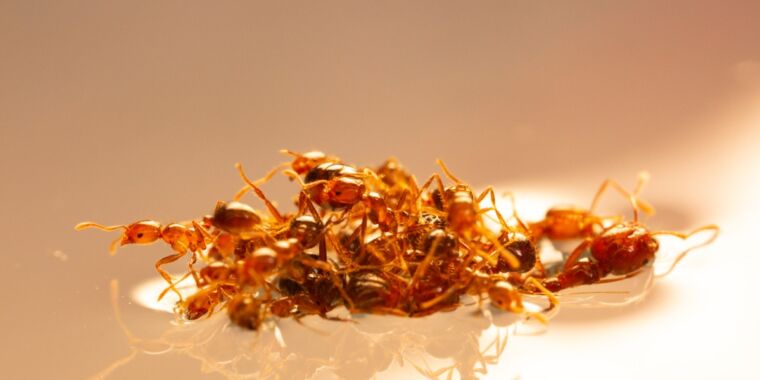
“The pandemic is over,” President Joe Biden said matter-of-factly in a 60 Minutes interview that aired Sunday night. The impromptu comment immediately drew headlines, as well as criticism from health experts. It also likely raised the anxiety levels of administration officials, who have been striving to promote booster uptake this fall. Some officials described the president’s comment as surprising.
“We still have a problem with COVID. We’re still doing a lot of work on it,” Biden immediately noted in the interview. “But the pandemic is over. If you notice, no one’s wearing masks,” he said, referencing the crowds at the auto show in Detroit, where he made the comments. “Everybody seems to be in pretty good shape. And, so I think it’s changing and I think this is a perfect example of it.”
Though many in the public health community will argue that the pandemic is objectively not over, the president’s remarks reflect the country’s relationship status with the pandemic, which is a resounding: “It’s complicated.”
Not over
By the data, we’re very much still in a pandemic. That’s not to say there isn’t cause for optimism—cases are on the decline, deaths and hospitalizations are down, vaccines are widely available in the US, the latest booster doses match the currently circulating strain of SARS-CoV-2 (for now). But reported cases are still high, with an average of over 61,000 new cases per day. And that’s just the cases that get reported. With most people relying on home-based testing, the true number of cases is likely to be several multiples of that figure. Even just based on the reported cases, the transmission rates are calculated as being high in 94 percent of US counties, according the Centers for Disease Control and Prevention.
While the rates of hospitalization and death are far lower than they have been, there are still 31,000 Americans hospitalized each day. And the current average of daily deaths is 464. Though some people may argue that some of those deaths are with COVID-19, rather than from COVID-19, the distinction may not be as meaningful as they think, given that COVID-19 is and has always been most dangerous to those with underlying health conditions. As top infectious disease expert Anthony Fauci recently noted in an interview with NPR:
“What’s the difference with someone who has mild congestive heart failure, goes into the hospital and gets COVID, and then dies from profound congestive heart failure?” he asked. “Is that with COVID or because of COVID? COVID certainly contributed to it.”
“The worst time to stop”
Though the current plateau of around 400 deaths per day feels relatively low—It’s dwarfed by a peak in February amid the omicron wave, which hit over 2,600 per day—it’s still a massive disease burden. If we continue seeing this relatively low 400-per-day rate, that would annualize to 146,000 deaths per year. Such a figure would likely keep COVID-19 in the top five causes of death in the US, potentially beating out Alzheimer’s disease, which killed 134,000 people in 2020. In reality, COVID-19 ranked as the third leading cause of death in 2020, killing over 350,000. And for anyone making the argument that COVID-19 is now just as dangerous as the flu: even in the worst flu season in recent years, the 2017-2018 season, flu deaths topped out at about 52,000. And, the flu isn’t associated with long-term disease like COVID-19.
Of course, this is only what’s going on in the US with the pandemic, which is by definition global. But, the current trends in the US mirror those seen globally, with cases, hospitalizations, and deaths relatively lower but still high. Global deaths are averaging over 1,600 per day.
In a press briefing last week, World Health Organization Director-General Tedros Adhanom Ghebreyesus gave remarks noting the positive trends but directly contradicting Biden’s suggestion that the global health emergency is over.
“We have never been in a better position to end the pandemic. We are not there yet, but the end is in sight,” Tedros said. “A marathon runner does not stop when the finish line comes into view. She runs harder, with all the energy she has left. So must we. … Now is the worst time to stop running. Now is the time to run harder and make sure we cross the line and reap the rewards of all our hard work.”








